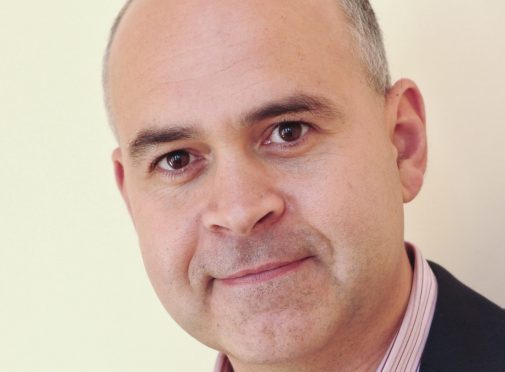It is estimated that 1.25 million people in the UK have an eating disorder.
While the disorder is mainly associated with women, men can also be affected, with more men being diagnosed now than ever before.
Eating disorders can develop when people have a distorted view of their body and become obsessed with their weight, size or body type, and feel self-conscious about themselves. They may become obsessed with losing weight through dieting and exercising.
Eating Disorder Week takes place between February 26 and March 4. Professor Ewan Gillon, chartered psychologist and clinical director of First Psychology Aberdeen discusses the symptoms and causes of eating disorders.
Symptoms of an eating disorder include:
- Anorexia Nervosa: People experiencing this life-threatening condition have an intense fear of gaining weight. They may become obsessed with restricting their food whilst increasing the amount of exercise they do. Usually experiencing symptoms of low self-esteem and depression, people will use the control they have over their intake of food as a coping mechanism. People with Anorexia Nervosa will often be extremely underweight for their age, sex and height.
- Bulimia Nervosa: People experiencing Bulimia Nervosa will tend to binge eat. However, to avoid gaining weight they will then ‘purge’ afterwards, either through self-induced vomiting, excessive exercise or using laxatives. They may hide large amounts of food and eat in secret to conceal their eating disorder from friends and family. Usually, they will feel depressed and disgusted or ashamed of their body.
- Compulsive eating: People who experience compulsive eating disorder will often be overweight due to extreme overeating. They will tend to binge eat, often eating past the point of being uncomfortably full and eating more than what is considered ‘normal’ in one sitting. Usually, they will feel guilt and shame afterwards.
Eating disorders cause severe physical and psychological problems – as well as taking a huge toll on our mental health they can be life threatening, with anorexia sometimes leading to serious heart problems.
- What causes an eating disorder?
There is no one reason why someone might develop an eating disorder. However, there may be a ‘trigger’ such as the breakdown of a relationship, grief or traumatic stress. Often, people with eating disorders will experience feelings of loneliness and anxiety, as well as feeling under pressure and as though they are unable to cope. They may also feel as though they ‘aren’t good enough’ and believe controlling their body is the only way they can control their life. Most people who develop an eating disorder have an underlying problem of low self-esteem.
Our relationships with friends, family members and partners can greatly impact our body image. For example, a parent commenting on their child’s weight might seem like an innocent comment to the parent, but to a child with low self-esteem, this can have a severe effect on how they view their body.
- Social media is known to have a negative effect
Social media can also have a negative effect – the abundance of images of apparently ‘perfect’ body shapes can make us feel inadequate about our appearance, leading to low self-esteem as we strive to achieve what we perceive is perfection. How many times have you scrolled through Instagram to see images of models and celebrities promoting their toned bodies and exercise regimes? Someone with low self-esteem may see these images and feel as though there is something wrong with them if they look different, so will strive to achieve what they view is the ideal body shape. For example, men may start exercising excessively in order to ‘bulk up’, whilst women may cut calories to lose weight.
- How to spot the signs someone you know is experiencing eating difficulties
People will often go to huge lengths to try and conceal their eating disorder for as long as possible. However, look out for these tell-tale signs:
- Are they constantly dieting, skipping meals and counting calories?
- Do you find food missing but never see them eating? Or, perhaps you find unusual amounts of food wrappers in the bin?
- Have they lost a lot of weight, or do they hide underneath baggy clothes?
- Do they exercise too much?
- Do they make excuses to go to the bathroom after eating?
- Do they faint, feel dizzy, or show signs of vomiting?
- Are they always tired, with extreme levels of low energy?
How can you help?
- Voice your concerns in a patient and supporting manner. Try not to criticise or be judgemental
- Encourage them to seek help. Go with them to see their GP or look up a local association
- Support them by inviting them out to socialise and checking-in with them
- Try to help build their self-esteem – let them know why you value their friendship
- Avoid talking about your body hang-ups, food, weight or diet around them
Treatments available
In order to overcome an eating disorder, professional help must be sought. If physical problems have occurred, the person will usually be admitted to hospital.
However, in order to address the psychological issues behind the reasons for their eating disorder, those experiencing eating difficulties should speak to a counsellor. This can be done on a one-to-one basis, or with family members.
Cognitive Behavioural Therapy (CBT) has also been shown to be an effective tool in managing eating disorders and is something we often use whilst working with clients to help them change their behaviour and attitude towards food and body image.
